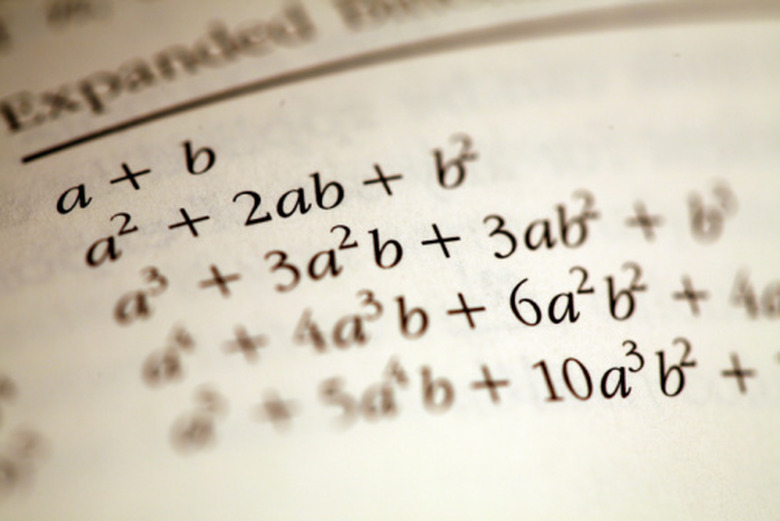The Four Types Of Multiplication Properties
Since the times of the ancient Greeks, mathematicians have found laws and rules that apply to the use of numbers. With respect to multiplication, they have identified four basic properties that always hold true. Some of these may seem fairly obvious, but it makes sense for students of math to commit all four to memory, since they can be very helpful in solving problems and simplifying mathematical expressions.
Commutative
Commutative
The commutative property for multiplication states that when you multiply two or more numbers together, the order in which you multiply them will not change the answer. Using symbols, you can express this rule by saying that, for any two numbers m and n, m x n = n x m. This could also be expressed for three numbers, m, n and p, as m x n x p = m x p x n = n x m x p and so on. As an example, 2 x 3 and 3 x 2 are both equal to 6.
Associative
Associative
The associative property says that the grouping of the numbers does not matter when multiplying a series of values together. Grouping is indicated by the use of brackets in mathm and the rules of math state that operations within brackets are to take place first in an equation. You can summarize this rule for three numbers as m x (n x p) = (m x n) x p. An example using numerical values is 3 x (4 x 5) = (3 x 4) x 5, since 3 x 20 is 60 and so is 12 x 5.
Identity
Identity
The identity property for multiplication is perhaps the most self-evident property for those who have some grounding in math. In fact, it is sometimes assumed to be so obvious that it is not included in the list of multiplicative properties. The rule associated with this property is that any number multiplied by a value of one is unchanged. Symbolically, you can write this as 1 x a = a. For instance, 1 x 12 = 12.
Distributive
Distributive
Finally, the distributive property holds that a term consisting of the sum (or difference) of values multiplied by a number is equal to the sum or difference of the individual numbers in that term, each multiplied by that same number. The summary of this rule using symbols is that m x (n + p) = m x n + m x p, or m x (n – p) = m x n – m x p. An example could be 2 x (4 + 5) = 2 x 4 + 2 x 5, since 2 x 9 is 18 and so is 8 + 10.
Cite This Article
MLA
Judge, Michael. "The Four Types Of Multiplication Properties" sciencing.com, https://www.sciencing.com/four-types-multiplication-properties-8632093/. 24 April 2017.
APA
Judge, Michael. (2017, April 24). The Four Types Of Multiplication Properties. sciencing.com. Retrieved from https://www.sciencing.com/four-types-multiplication-properties-8632093/
Chicago
Judge, Michael. The Four Types Of Multiplication Properties last modified March 24, 2022. https://www.sciencing.com/four-types-multiplication-properties-8632093/
